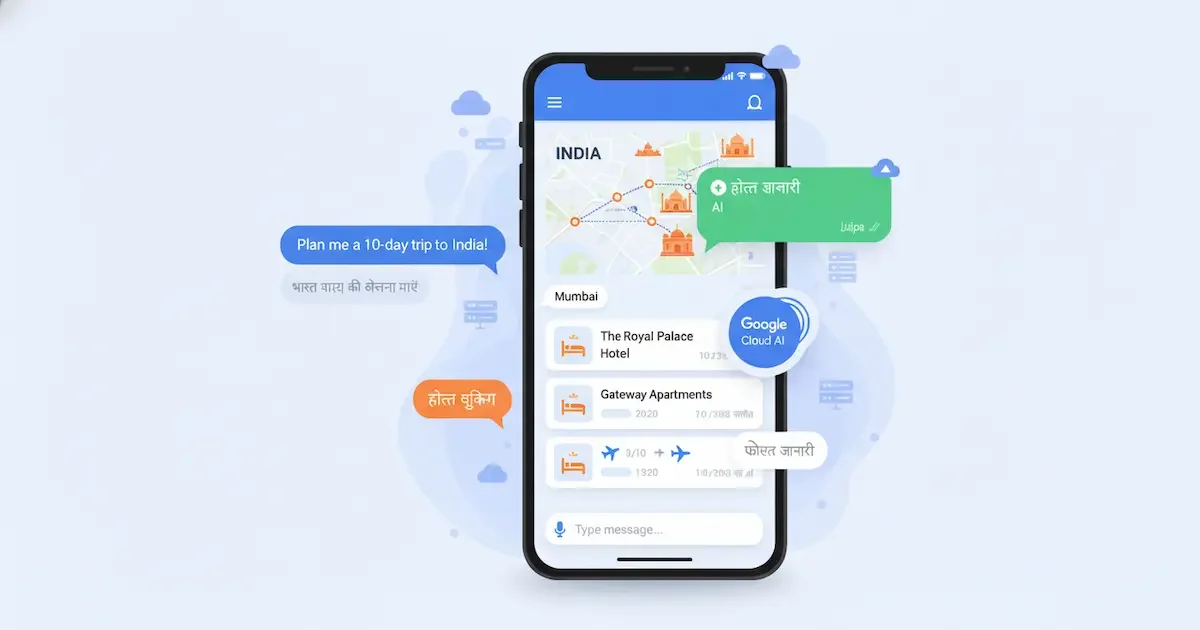Why this partnership matters (beyond the buzzwords)
AI in travel has been stuck in “FAQ bot” mode for years. Myra’s new brain promises something different:
· Multimodal intelligence: Pulls from text, images, maps, and reviews to build itineraries that feel curated, not copy-pasted. Think: “3 days in Coorg with kid-friendly stays, self-drive routes, and two cafe stops” instead of a generic top-10 list.
· Vernacular comfort: English isn’t mandatory. Myra already moved toward Hindi and multilingual assistance; the Google Cloud stack should widen that language net and make voice-led planning feel natural. For a market where language can be a blocker, this is a big unlock.
· Context that sticks: Vertex AI is built for enterprise-grade models and agent orchestration—useful when you’re juggling flights, hotels, transfers, and support, all inside one conversation.
What you’ll likely feel as a user
1. Trip planning becomes a conversation, not a spreadsheet.
Tell Myra your vibe (“quiet beach, 2 hours from Vizag, budget ₹6–8k/night”) and expect itinerary drafts that mix stays, local transport, and time-boxed sightseeing—with map context baked in. The Maps integration should make route logic and distances obvious instead of you cross-checking five tabs.
2. Regional language + voice goes mainstream.
If you’re planning in Hindi (and soon more Indian languages), Myra won’t just translate; it should understand constraints like “no overnight buses” or “senior-friendly stays” and adapt results accordingly. That’s where Gemini’s multimodal reasoning helps.
3. Discovery gets personal without feeling nosey.
Expect recommendations to reflect your previous choices—family resorts vs boutique homestays, early-morning flights vs red-eyes, veg-friendly breakfast, etc. If done right, it saves you time without boxing you into a bubble.
Under the hood (in human English)
· Gemini is Google’s flagship family of generative models tuned for reasoning across text, images, and code. In travel, that means better itinerary logic (no 9 a.m. museum visit after a midnight arrival).
· Vertex AI is the enterprise platform that helps MakeMyTrip build, govern, and scale these AI workflows safely—think versioning models, monitoring quality, and plugging into data pipes.
· Google Maps injects real-world context: travel times, hotspots, and geospatial details that make day plans realistic.
Together, that’s a stack built to move past “chatbot that searches the site” to “agent that plans with you.”
The competitive ripple in India
MakeMyTrip’s August launch of a multilingual GenAI planner signalled intent; the Google Cloud deal gives it muscle. In a market where OTA apps often feel identical, the platform that nails conversational, language-inclusive planning will win first-time planners from Tier-2/3 cities and keep power users loyal. Expect rivals to double down on their own AI roadmaps and voice experiences.
What still needs watching
· Quality > novelty: AI can hallucinate. The test is whether Myra’s suggestions remain grounded in inventory, real-time availability, and reliable reviews—especially during peak seasons.
· Local nuance: Vernacular support isn’t just translation. It’s cultural context: holidays, food preferences, local transport quirks.
· Privacy & control: Personalisation works only if users feel in control—clear settings, easy opt-outs, and transparency about how data powers recommendations. (MakeMyTrip hasn’t detailed new privacy controls in these announcements; look for that as features roll out.)
The bottom line
If MakeMyTrip executes, Indian travellers get a planning experience that feels like chatting with a well-traveled friend who also happens to know live prices, routes, and availability. Less overwhelm, more clarity. And yes, more reasons to actually take that long-postponed trip.
